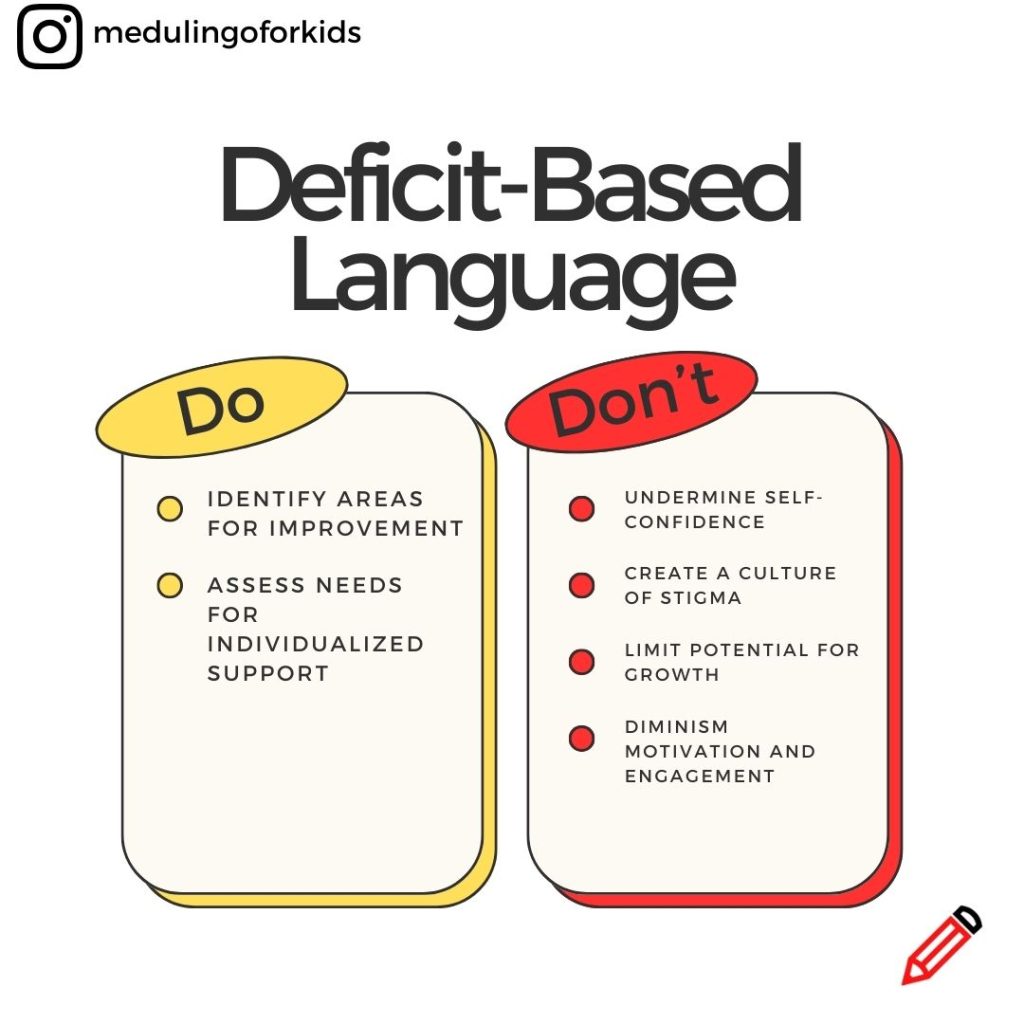Language is a potent force that shapes perceptions, attitudes, and behaviors in all facets of life, including education. In the realm of pedagogy, the choice of language holds particular significance as it can either empower or disempower learners. While deficit-based language has historically been used in educational contexts to identify areas of weakness or need, its pervasive use can have concerning implications for students’ self-esteem, motivation, and academic success. This article delves into the concerning aspects of using deficit-based language in education and explores the impact it can have on students’ well-being and learning outcomes.

1. Undermining Self-Confidence:
One of the most significant concerns associated with deficit-based language is its potential to undermine students’ self-confidence and self-perception. When students are repeatedly labeled as “struggling” or “low-performing,” it can erode their sense of self-worth and perpetuate a cycle of negative self-perception. Deficit-based language reinforces the notion that students’ value and potential are contingent upon their perceived shortcomings, rather than their inherent strengths and capabilities.
2. Creating a Culture of Stigma:
Deficit-based language can perpetuate a culture of stigma and marginalization. When students are categorized based on their perceived deficits, it reinforces stereotypes and reinforces negative societal attitudes towards certain groups of learners. This stigmatization can exacerbate feelings of alienation, disengagement, and not belonging among students who already face systemic barriers to academic success.
3. Limiting Potential for Growth:
By focusing exclusively on students’ weaknesses or areas of need, deficit-based language overlooks their untapped potential and capacity for growth. Every student possesses unique strengths, talents, and interests that warrant recognition and celebration. When educators prioritize deficit-based language, they risk overlooking students’ inherent assets and fail to cultivate a supportive learning environment that fosters a growth mindset and encourages achievement.
4. Diminishing Motivation and Engagement:
Deficit-based language can diminish students’ motivation and engagement in learning, leading to disinterest, apathy, and disengagement from academic pursuits. When students perceive themselves as constantly falling short or being judged solely on their weaknesses, they may become disillusioned with the educational process and disheartened by their perceived lack of progress. This loss of motivation can hinder students’ performance and impede their overall educational attainment.
Shift from Deficit-Based Language to Strength-Based Language
In conclusion, the pervasive use of deficit-based language in education carries significant concerns regarding its impact on students’ self-esteem, motivation, and learning outcomes. By shifting towards a strength-based approach that celebrates students’ unique talents, abilities, and potential for growth, educators can create a more inclusive, empowering, and supportive learning environment. It is essential for educators to recognize the detrimental effects of deficit-based language and strive to cultivate a culture of positivity that uplifts and empowers all learners.
===
Interested in teaching medical literacy pain free? Shop medical literacy resources!

This article was drafted by ChatGPT and edited by Joan Lee Tu, the founder of MedULingo.com.
You may also be interested in the following:
Strength-Based Feedback for Writing Assignments: An Assessment for Educators
Strength-Based Language for Medical Educators
50 Strength-Word Coloring Sheets – FREE DOWNLOAD
9 Strength-Based Reframes for Neurodivergent Learners – FREE DOWNLOAD
The Role of Strength-Based Language in Medical Literacy Education
The Case for Change: Concerning Aspects of Deficit-Based Language in Education
Strength-Based Language: Empowering STEM Learners
Strength-Based Language: Empowering Narratives in STEM Education

